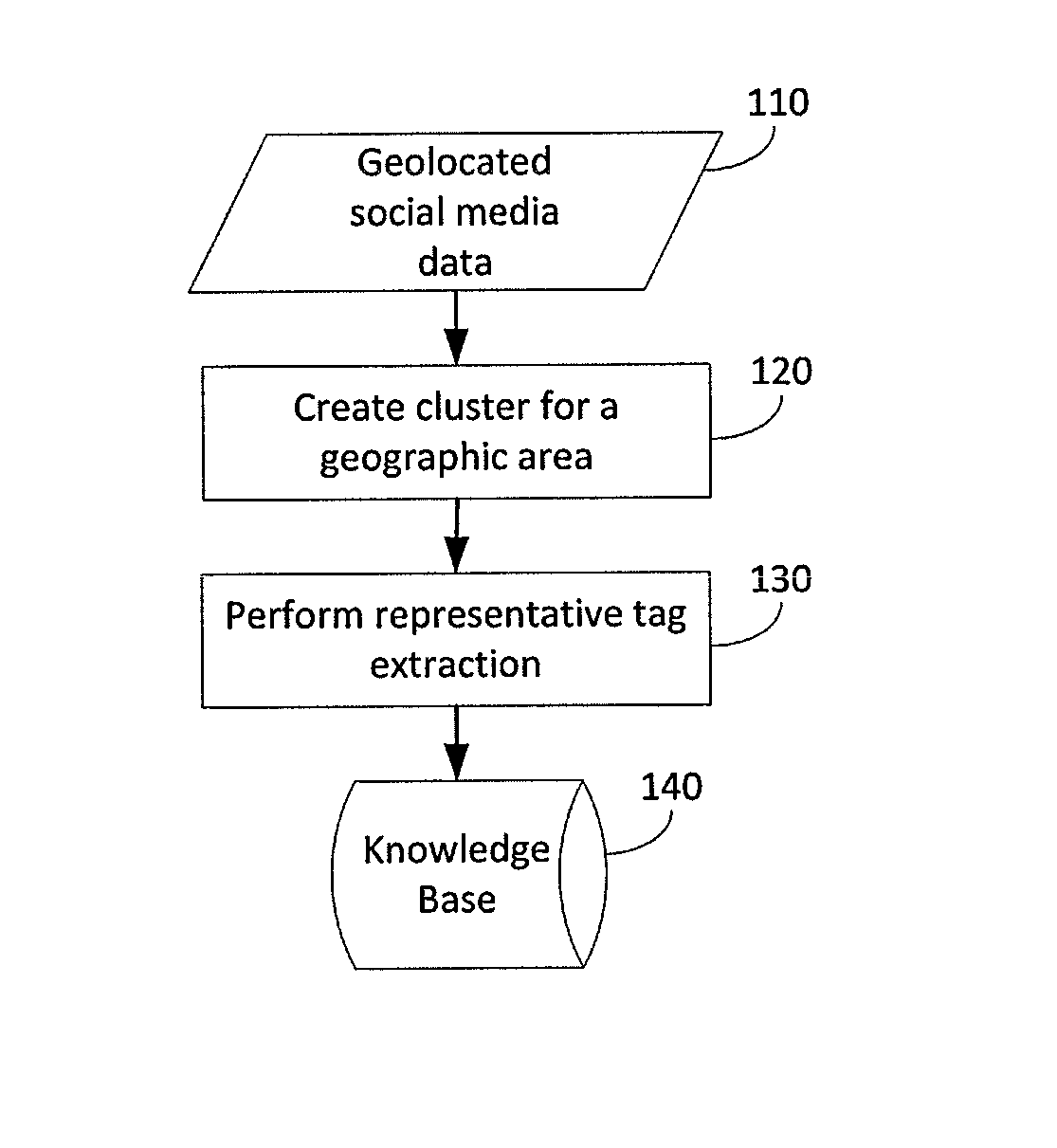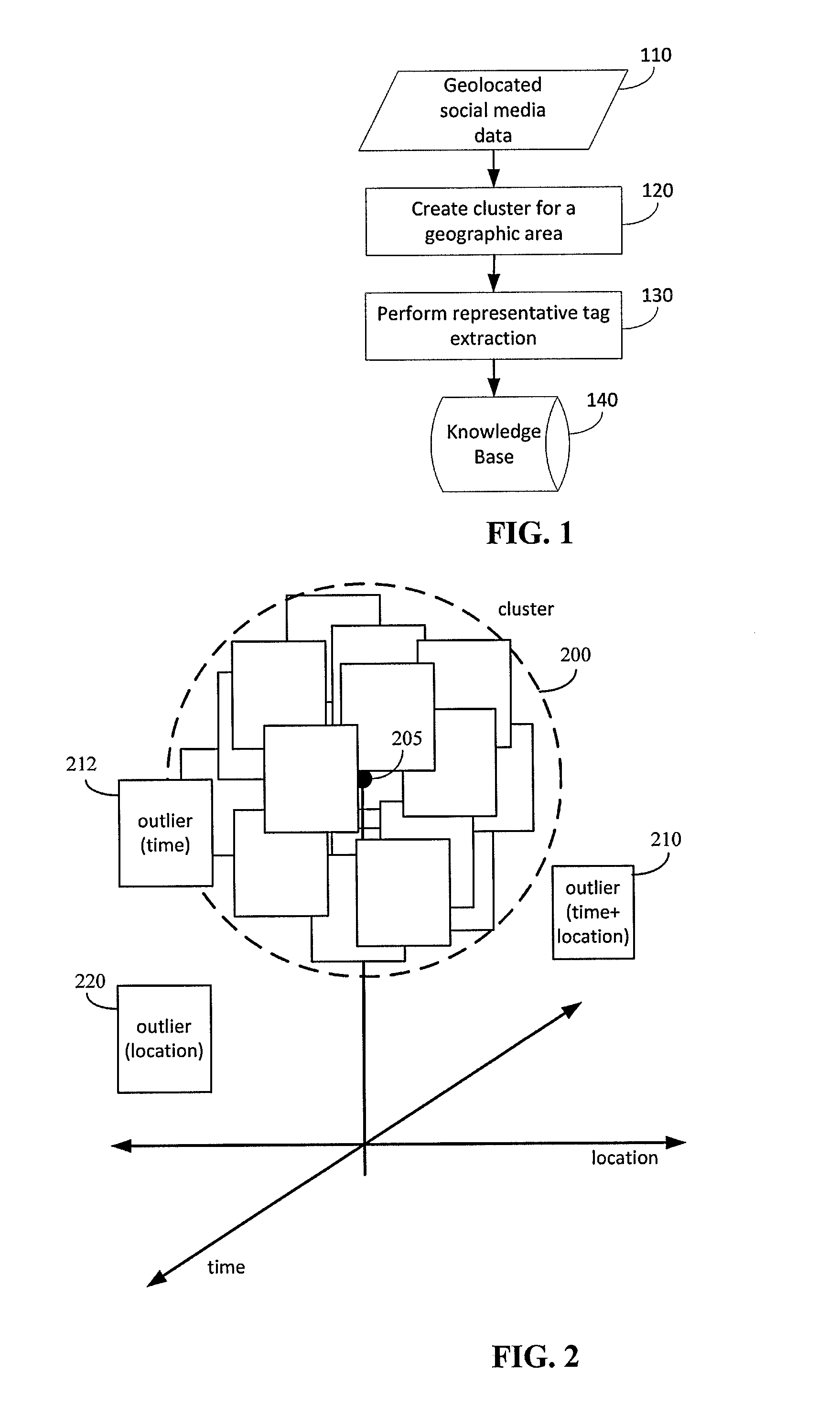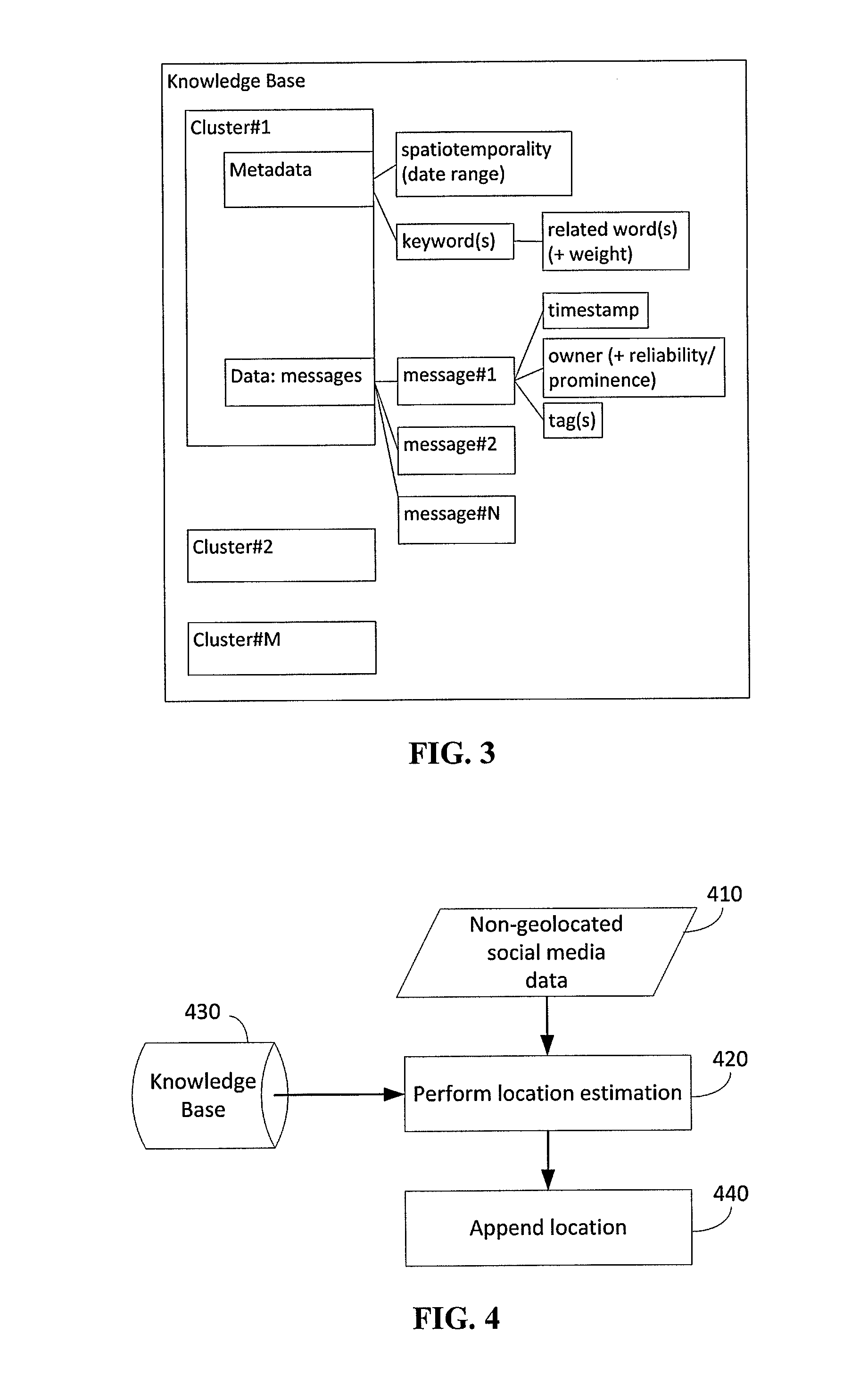Geolocating social media
a social media and geolocation technology, applied in the field of geolocation social media, can solve the problem of noisy social media data
- Summary
- Abstract
- Description
- Claims
- Application Information
AI Technical Summary
Benefits of technology
Problems solved by technology
Method used
Image
Examples
example 1
[0063]A non-geolocated social media data item may be an image, for example, an image related to the Deepwater Horizon Oil Spill. Such an image may be tagged with “oil spill” and have a time / date stamp corresponding to the period of time during this disaster. Although these tags may help identify this image as being related to the oil spill (and associated with certain clusters containing representative tags related to an oil spill), it is not readily apparent where the picture was taken because affected area of the spill is expansive.
[0064]By using certain embodiments of the invention, the keywords of “oil” and “spill” along with other keywords and combinations of keywords are searched that would help to better determine a more precise location. For example, if the image is also tagged with “beach” and “Pensacola”, then it may be possible to determine that the image originated from a beach in Pensacola, Fla.
example 2
[0065]For the cluster-A corresponding to {Latitude 30.276, Longitude=−87.5534 Date=2010-06-15} within a spatial radius of 10 miles and temporal radius of 10 days and having the keyword “oil” and meta-keyword “Alabama,” when a non-geolocated image having a date of Jun. 14, 2010 and a description: “Oil spill damage in Alabama,” a higher confidence value may be attributed to this image and cluster as compared to the Example 1.
example 3
[0066]In a case where an image dated Jun. 14, 2010 has the description “Oil contamination on Orange Beach,” the geographic name “Orange Beach” can make the search for the best cluster more complicated than in Example 2. “Orange Beach” may be associated with many places in the world, including Alabama; however, embodiments can use “Orange Beach and the date Jun. 14, 2010 and the keyword “oil” to arrive at the cluster-A.
PUM
 Login to View More
Login to View More Abstract
Description
Claims
Application Information
 Login to View More
Login to View More - R&D
- Intellectual Property
- Life Sciences
- Materials
- Tech Scout
- Unparalleled Data Quality
- Higher Quality Content
- 60% Fewer Hallucinations
Browse by: Latest US Patents, China's latest patents, Technical Efficacy Thesaurus, Application Domain, Technology Topic, Popular Technical Reports.
© 2025 PatSnap. All rights reserved.Legal|Privacy policy|Modern Slavery Act Transparency Statement|Sitemap|About US| Contact US: help@patsnap.com



